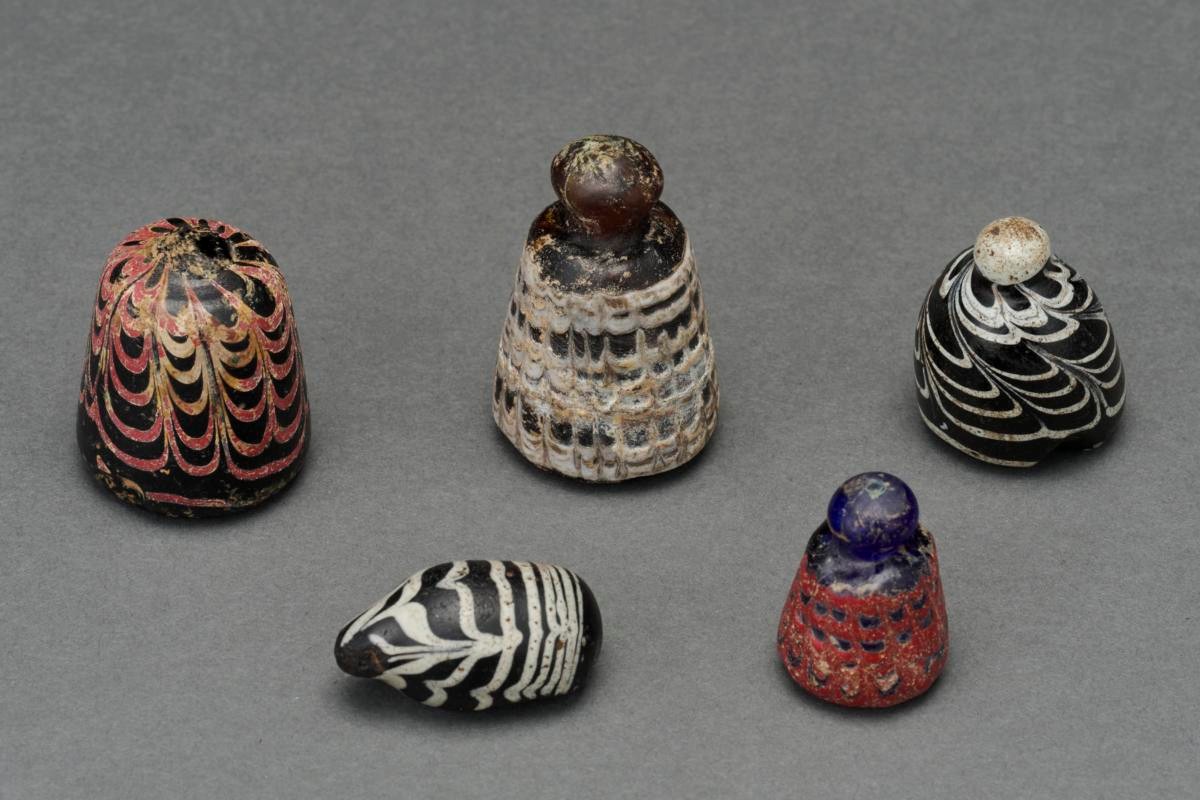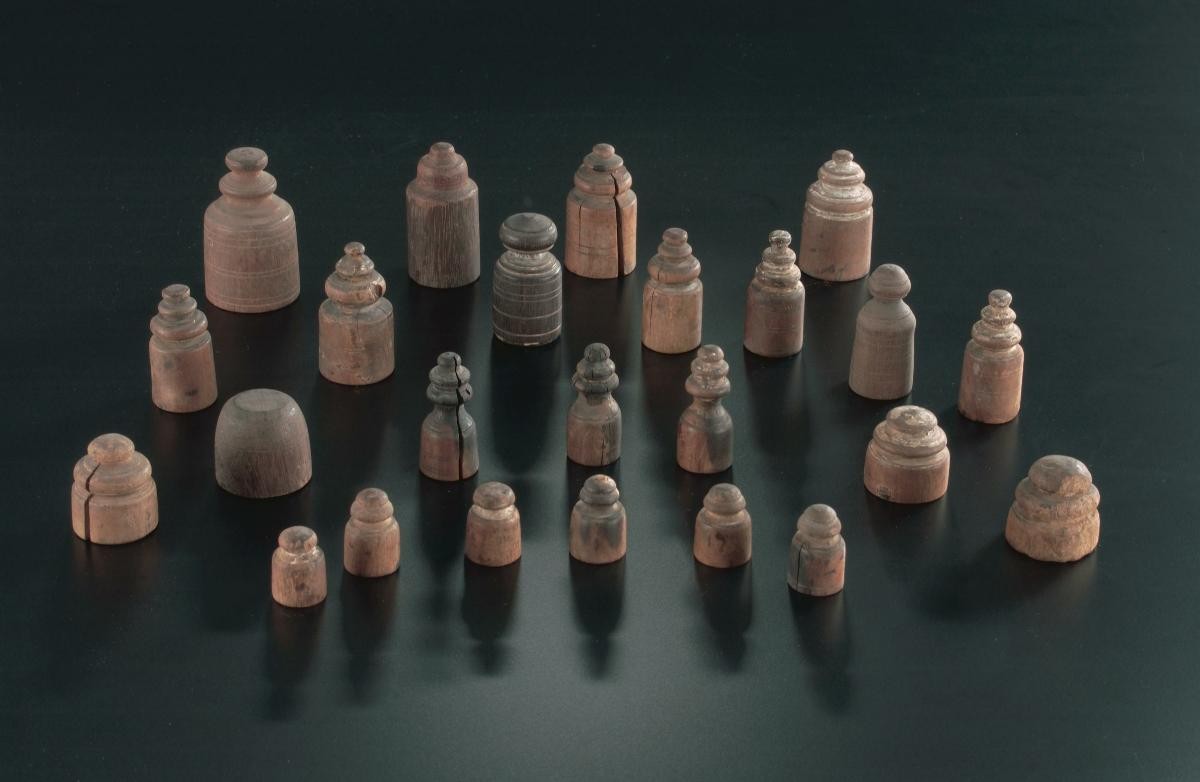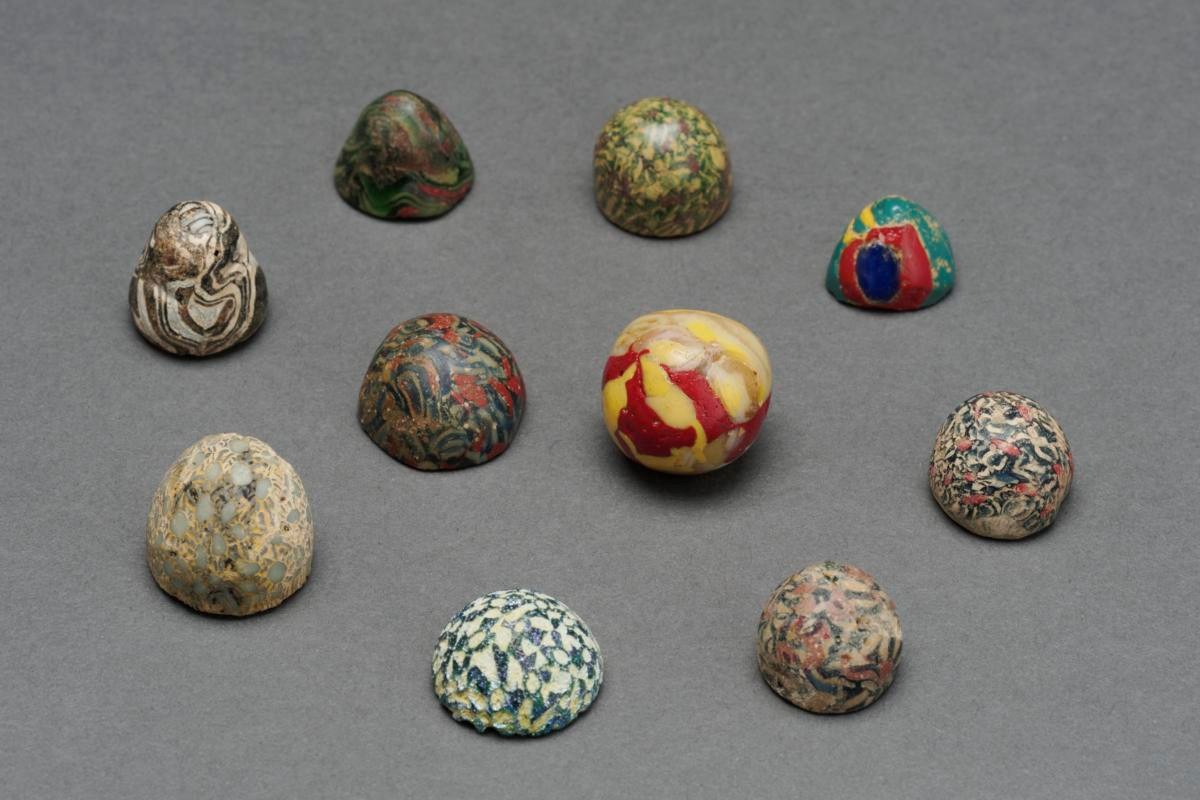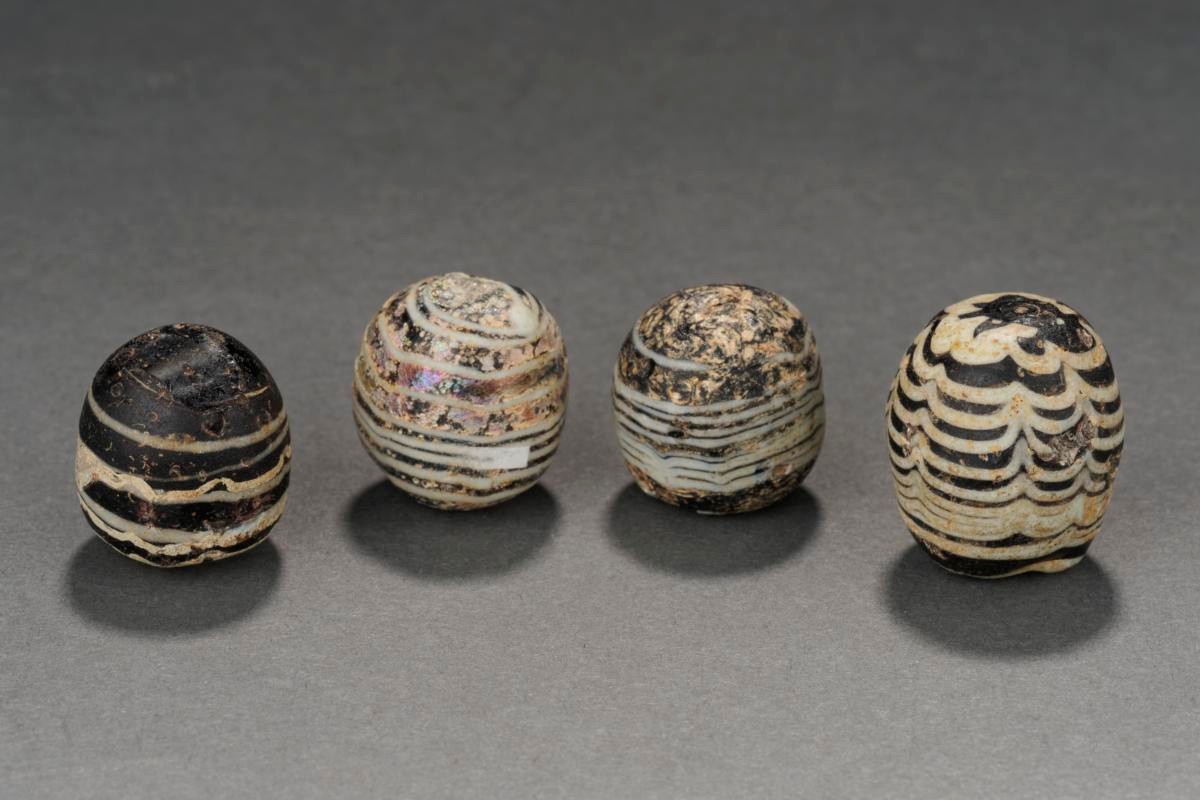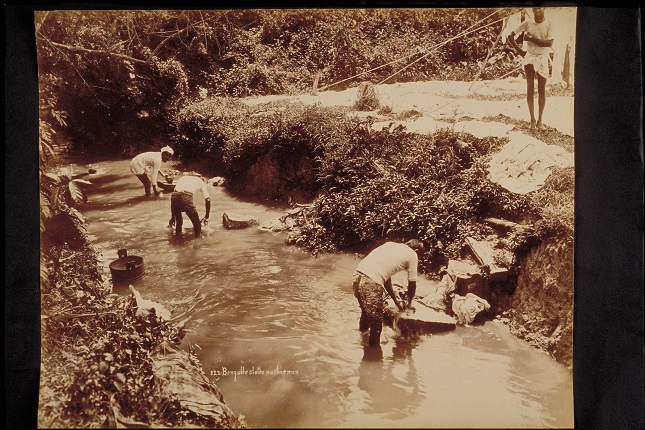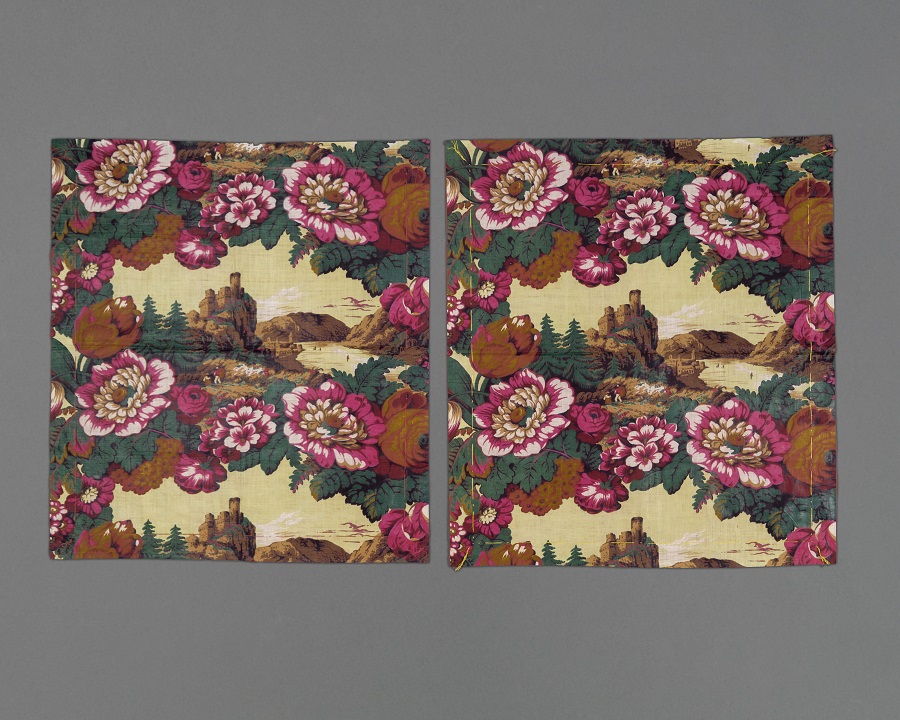Object size: Refer to parts
Chess, a game of Indian origins, spread through Persia from the middle of the seventh century and was introduced into the Islamic world. The game caught the attention of prominent figures such as the caliph Harun al-Rashid (d. 813 CE) and al-Hakim, the Fatimid ruler of Egypt. One particular trajectory sees the development of Islamic chess pieces into more stylised, abstract forms such as these pieces. In this stylistic family, the king, queen, and pawn pieces typically bear cylindrical shapes topped with domes or knobs. The king represented the largest piece while the pawn would be the smallest. The other two pieces may represent either rooks, bishops, or knights. The glassmaking technique used is known as marvering where a hot glass vessel is rolled onto strips of coloured glass to produce decorative patterns. Such techniques were inherited as Islamic artists in the region were technical successors to the ancient glass traditions of Greece and Rome.




